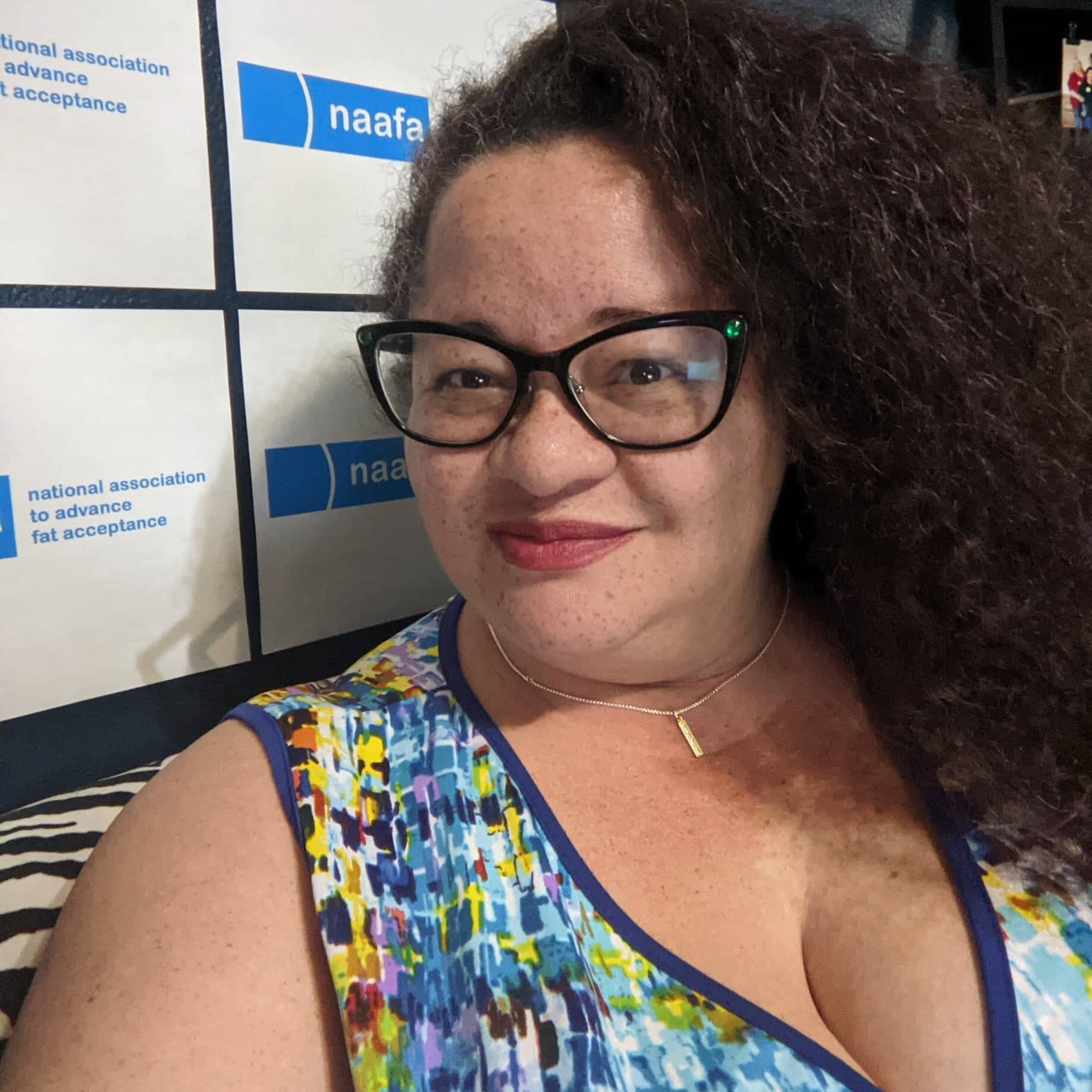Pride and Pronouns Part II: Gender privilege and gender respect in NAAFA Community
By Tigress Osborn
The first time I heard the term “cisgender” was at a diversity training for educators in the early 2000s. A well-known speaker used the word in a way that assumed everyone in the room knew what it meant. We should have, but the obvious discomfort in the room showed that many of us didn't. I raised my hand. “You used a word I don't know there,” I said. “What does it mean?”
I don’t remember the exact words the speaker used, but he basically explained that someone cisgender is a person whose gender “matches” their sex. I knew the concept, just not the word. A lot of people are raised with the idea that the words ”gender” and “sex” mean the same thing. I learned it that way, and I have no doubt many of you did, too, whether you are cisgender, transgender and/or nonbinary. But, those words don’t actually mean the same thing. Sex relates to bodies and physiology; gender relates to identity and expression.
After years of learning more about gender identity, I know there is more nuance than what that speaker explained in the moment, and more than I’ll go into here, but here’s a start. (A resource I recommend for people who are new to thinking about gender and sex as distinct from each other is GenderBread Person). It’s important to know that everything I say about gender is through the lens of my cisgender privilege. Being seen as someone whose gender and sex “match” means not being marginalized or oppressed in the ways that transgender and/or nonbinary people often are. Cisgender privilege in fat community means that, regardless of whatever challenges we face as fat people, if we are cisgender, we don’t have the additional challenges that come along with being trans and/or nonbinary. We can use that gender privilege to make the world better for those who don’t have it, just as we hope non-fats will use their privilege to advocate for us.
At one of my first NAAFA meetings, I used the word cisgender and, like that speaker I’d encountered years before, I was stopped and asked for explanation. “Why do we need a word for that, when that’s what most people are?” I was asked. Indeed, most people are cisgender. But common is not the same as normal. By specifying cisgender when that’s what we mean, we disrupt the idea that cisgender is normal and everything else is not.
NAAFA is an organization that has been, as far as we know, predominantly lead by cisgender people over the course of our five-plus decades of fat acceptance work. This does not mean there have never been transgender and/or nonbinary people involved. As Mycroft explained in Part 1, it is not always safe for trans /nonbinary people to be themselves. NAAFA has a long history of cishet-centering (focusing mainly on cisgender and heterosexual people), but we know that there have always been LGBTQIA+ people--especially feminist women and femmes--who have done fat liberation activism, with NAAFA and with other fat orgs. Undoubtedly, there have been more trans and nonbinary NAAFA members and supporters than we know about. As we think about the future, we want everyone to be able to be themselves when they are in our spaces.
We have to actively work to create space that is safe for people of all gender identities. Pronoun use is just one part of that. A lot of cisgender people wonder what the point is of telling people their pronouns in a space where it’s mostly other cisgender people. While it may be true that we are a predominantly cisgender group, assuming that at every activity means the burden is on trans / nonbinary people to out themselves. Inviting everyone to use their pronouns in introductions means that telling someone your pronoun is the norm in that space, rather than an action that only marginalized people have to take.
At NAAFA’s 50th Anniversary Conference, at the suggestion of then-Chair Darliene Howell, we invited attendees to include their pronouns on their name badges. Honestly, we didn’t know how some of our members would react. Some were curious or confused; some were proud of the progress. Everyone was willing, even those who didn’t fully understand why we were doing it.
Of course, the millions of fat people in the USA are much more varied in their personal and political beliefs about gender than the 100 people who were in the room on the first day of NAAFACon50. Unfortunately, some fat people are transphobic or gender-exclusionary. We will encounter people who see our pronoun use in webinars and on our email signatures (thanks to a friendly reminder from activist Marlene Mouttet) as a kind of “virtue signaling”, or performative allyship. Our duty is to ensure that other decisions, actions, and programming of our organization demonstrate genuine support for transfats in our community, as well as for other transgender people.
Tigress Osborn is the Community Outreach Director and NAAFA Board Chair . Tigress joined the NAAFA Board of Directors in 2015 and became Director of Community Outreach in 2017. She is the founder of Full Figure Entertainment in Oakland, CA and co-founder, with activist/blogger Nicholet Deschine Parkhurst of Redstreak Girl, of PHX Fat Force in Phoenix, AZ. Her professional background as a youth advocate, diversity educator, and equity and inclusion consultant informs the fat liberation activism she has engaged in since 2008.
OPINION DISCLAIMER: Any views or opinions stated in the NAAFA Community Voices Blog are personal and belong solely to the blog author. They do not represent the views or opinions of NAAFA or the people, institutions or organizations that the owner may or may not be associated with in professional or personal capacity, unless explicitly stated. Any views or opinions are not intended to malign any religion, ethnic group, club, organization, company, or individual.


